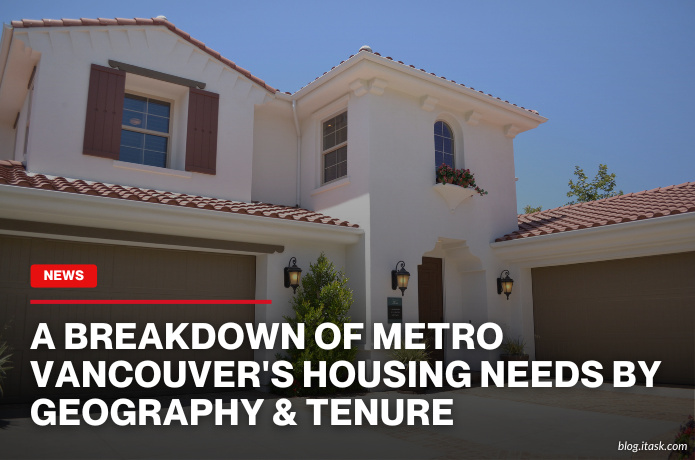A Breakdown Of Metro Vancouver's Housing Needs By Geography & Tenure
A Breakdown Of Metro Vancouver's Housing Needs By Geography & Tenure

Metro Vancouver is expected to need over 570,000 new homes by 2050, and a recent report breaks that number down by city and type of housing. The report from the Metro Vancouver Regional District gives a clearer picture of where homes are most needed and what kind—whether they should be rented or owned, affordable or market-rate.
The study looked at 16 cities in the region and sorted future housing needs by geography and tenure—meaning whether people will rent or own. Not surprisingly, Vancouver itself leads the list, needing about 156,000 new homes, followed by Surrey, which will need 142,000. Coquitlam and Burnaby round out the top four, each needing around 50,000 new homes by 2050.
The report also separates the needs by type of housing. Just under half of the new homes—about 46%—will need to be rental units. Within that, 18% should be deeply affordable rentals, aimed at households with very low income. That includes subsidized units or those priced well below market rates. The rest of the rentals should be at moderate or market rents.
Ownership housing will still be a big part of the mix, with 54% of the total projected as homes for purchase. But even here, there’s a range—some will need to be more affordable for middle-income families, not just high-end condos. This breakdown helps local governments plan for different types of developments, like duplexes, townhomes, and apartments, not just single-family homes.
One big takeaway is that housing needs are not spread evenly. Some cities, like West Vancouver and Bowen Island, will need fewer new homes simply because they have smaller populations. But growing areas like Surrey and Coquitlam will need to prepare for much faster growth and more development.
With this data, Metro Vancouver is trying to better coordinate housing plans across cities. Instead of each municipality planning in isolation, the idea is to use this common forecast to shape policy, zoning, and funding decisions that match the region’s actual needs.
